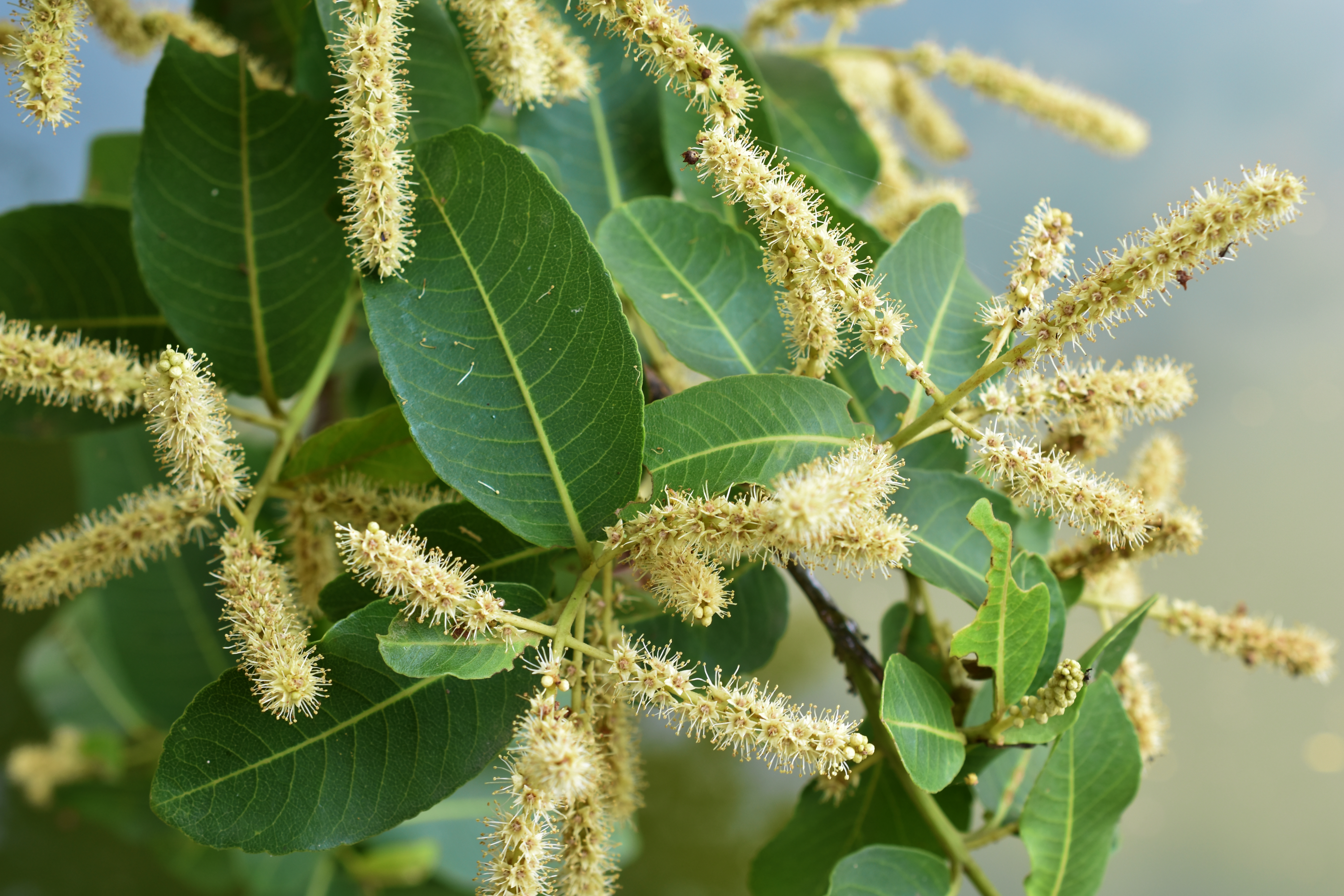Arjun tree
(Terminalia arjuna)

Description
Terminalia arjuna is a tree of the genus Terminalia. It is commonly known as arjuna or arjun tree in English. T. arjuna grows to about 20–25 metres tall; usually has a buttressed trunk, and forms a wide canopy at the crown, from which branches drop downwards. It has oblong, conical leaves which are green on the top and brown below; smooth, grey bark; it has pale yellow flowers which appear between March and June; its glabrous, 2.5 to 5 cm fibrous woody fruit, divided into five wings, appears between September and November. The tree does not suffer from any major diseases or pests, but it is susceptible to Phyllactinia terminale and rot due to polystictus affinis. The arjuna is seen across the Indian Subcontinent, and usually found growing on river banks or near dry river beds in Uttar Pradesh, Bihar, Maharashtra, Madhya Pradesh, West Bengal, Odisha and south and central India, along with Sri Lanka and Bangladesh. It has also been planted in Malaysia, Indonesia and Kenya. The arjuna is one of the species whose leaves are fed on by the Antheraea paphia moth which produces the tassar silk, a wild silk of commercial importance. Terminalia is a genus of large trees of the flowering plant family Combretaceae, comprising nearly 300 species distributed in tropical regions of the world. The genus name derives from the Latin word terminus, referring to the fact that the leaves appear at the very tips of the shoots.
Taxonomic tree:







